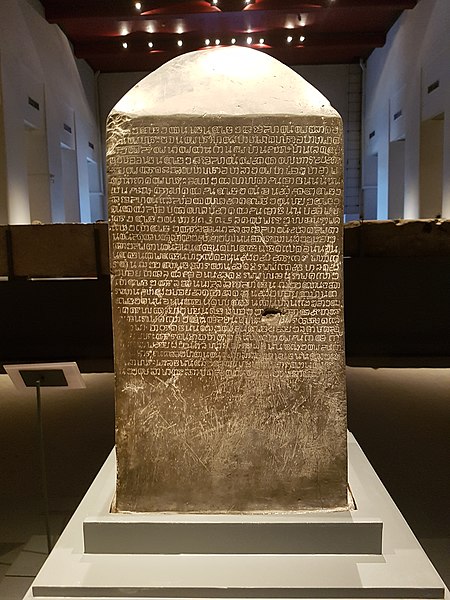The Sukhothai Kingdom or the Northern Cities was a post-classical Siamese kingdom (mandala) in Mainland Southeast Asia surrounding the ancient capital city of Sukhothai in present-day north-central Thailand. The kingdom was founded by Si Inthrathit in 1238 and existed as an independent polity until 1438, when it fell under the influence of the neighboring Ayutthaya after the death of Borommapan.
Wat Si Sawai at the Sukhothai Historical Park.
A Māravijaya Buddha from Sukhothai, dated to the second half of the 13th century, at the Walters Art Museum.
The Ram Khamhaeng Inscription at the Bangkok National Museum.
Replica of a Sukhothai royal temple at Mueang Boran.
Mandala (political model)
Maṇḍala is a Sanskrit word meaning 'circle'. The mandala is a model for describing the patterns of diffuse political power distributed among Mueang or Kedatuan (principalities) in medieval Southeast Asian history, when local power was more important than the central leadership. The concept of the mandala balances modern tendencies to look for unified political power, eg. the power of large kingdoms and nation states of later history – an inadvertent byproduct of 15th century advances in map-making technologies. In the words of O. W. Wolters who further explored the idea in 1982:The map of earlier Southeast Asia which evolved from the prehistoric networks of small settlements and reveals itself in historical records was a patchwork of often overlapping mandalas.
Bunga mas (Flowers of Gold), tribute from northern Malay states in Malay peninsula for Siam. National Museum, Kuala Lumpur.)





